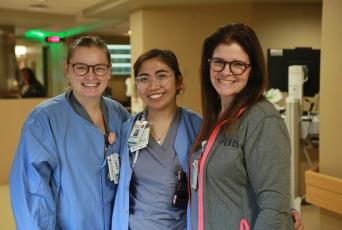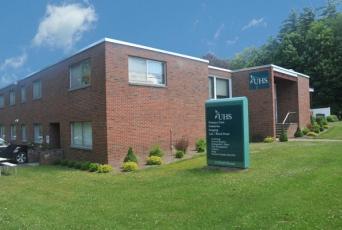
Breast Cancer Treatment
UHS provides those diagnosed with breast cancer access to comprehensive care, state-of-the-art technology and a multispecialty team to coordinate the best breast cancer treatment options for you in New York's Southern Tier. Some brief information is provided below about several treatment options available at UHS. This information may be helpful when you speak with your healthcare provider.
The treatment options available to you will depend on a number of factors including:
- The type of tumor
- The extent of the disease at the time of diagnosis
- Your age
- Your medical history
Your personal feelings about treatment, your self-image, your family history and your lifestyle will also be important considerations in your healthcare provider’s assessment and recommendations. You and your physician should discuss these treatment methods and how they apply to your situation. Understanding all your options from the beginning of your diagnosis allows you to have all of the information you need to make an informed and rational decision about your New York breast cancer treatment from UHS.
Lumpectomy
During a lumpectomy, both the tumor and a wedge of normal tissue surrounding the cancer are removed. A margin of normal tissue must be cut out to ensure the tumor has been completely removed. Lumpectomy is followed by approximately 6 weeks of radiation therapy administered at our breast cancer treatment center in New York's Southern Tier.
Mastectomy
Mastectomy is the surgical removal of the breast; it refers to a number of different procedures, including modified radical mastectomy, total (or simple) mastectomy, nipple-sparing mastectomy and radical mastectomy. Based on the size and location of the mass in your breast, your surgeon will recommend the type of surgery that offers you the best chance of successful treatment.
Sentinel Lymph Node Biopsy
Sentinel node biopsy is a surgical procedure used to determine if cancer has spread beyond a primary tumor into your lymphatic system. Sentinel node biopsy involves injecting a tracer material that helps locate the sentinel nodes during surgery. The sentinel nodes are removed and analyzed by a pathologist.
Axillary Node Dissection
Axillary node dissection involves removing at least 6 of the lymph nodes under the arm. These nodes are then sent to a pathologist to be checked for cancer.
Radiation Therapy
Radiationtherapy (also called radiotherapy) uses high-energy rays to kill cancer cells. It affects cells only in the part of the body that is treated. Radiation therapy may be used as a part of our breast cancer treatment in New York after surgery to destroy breast cancer cells that remain in the area.
Chemotherapy
Chemotherapy uses drugs to kill cancer cells. The drugs that treat breast cancer are usually given through a vein (intravenous) or as a pill. Most women receive a combination of drugs. The side effects of chemotherapy depend mainly on which drugs are given and how much. Chemotherapy kills fast-growing cancer cells, but the drugs can also harm normal cells that divide rapidly.
Hormone Therapy
Hormone therapy is also called anti-hormone treatment. If lab tests show that the tumor in your breast has hormone receptors, then hormone therapy may be an option. Hormone therapy keeps cancer cells from getting or using the natural hormones (estrogen and progesterone) they need to grow.
-
 Inside look at expanded UHS Upper Front Street locationDecember 11, 2025
Inside look at expanded UHS Upper Front Street locationDecember 11, 2025Monday marks the opening of Primary Care, Physical Therapy & Rehabilitation, and Laboratory services at the renovated location, with the new Pediatrics space scheduled to open in February.
-
 2026 Summer Nurse Externship application window now openDecember 08, 2025
2026 Summer Nurse Externship application window now openDecember 08, 2025UHS is thrilled to re-offer our Summer Nursing Externship Program in 2026. This is an exclusive opportunity for current nursing students to jump into the world of healthcare and gain hands-on experience.
-
 UHS Chenango Memorial Hospital receives federal funding for Sidney improvementsDecember 08, 2025
UHS Chenango Memorial Hospital receives federal funding for Sidney improvementsDecember 08, 2025UHS Chenango Memorial Hospital’s multi-specialty practice on Pearl Street in Sidney will soon undergo significant infrastructure upgrades, thanks to federal funding secured by Senator Kirsten Gillibrand.
-
UHS Home Care: Restoring confidence, one visit at a timeDecember 08, 2025
For Joan Cuneo, of Endicott, NY, receiving care at home from the providers at UHS Home Care has been instrumental to boosting her energy and restoring her confidence.


